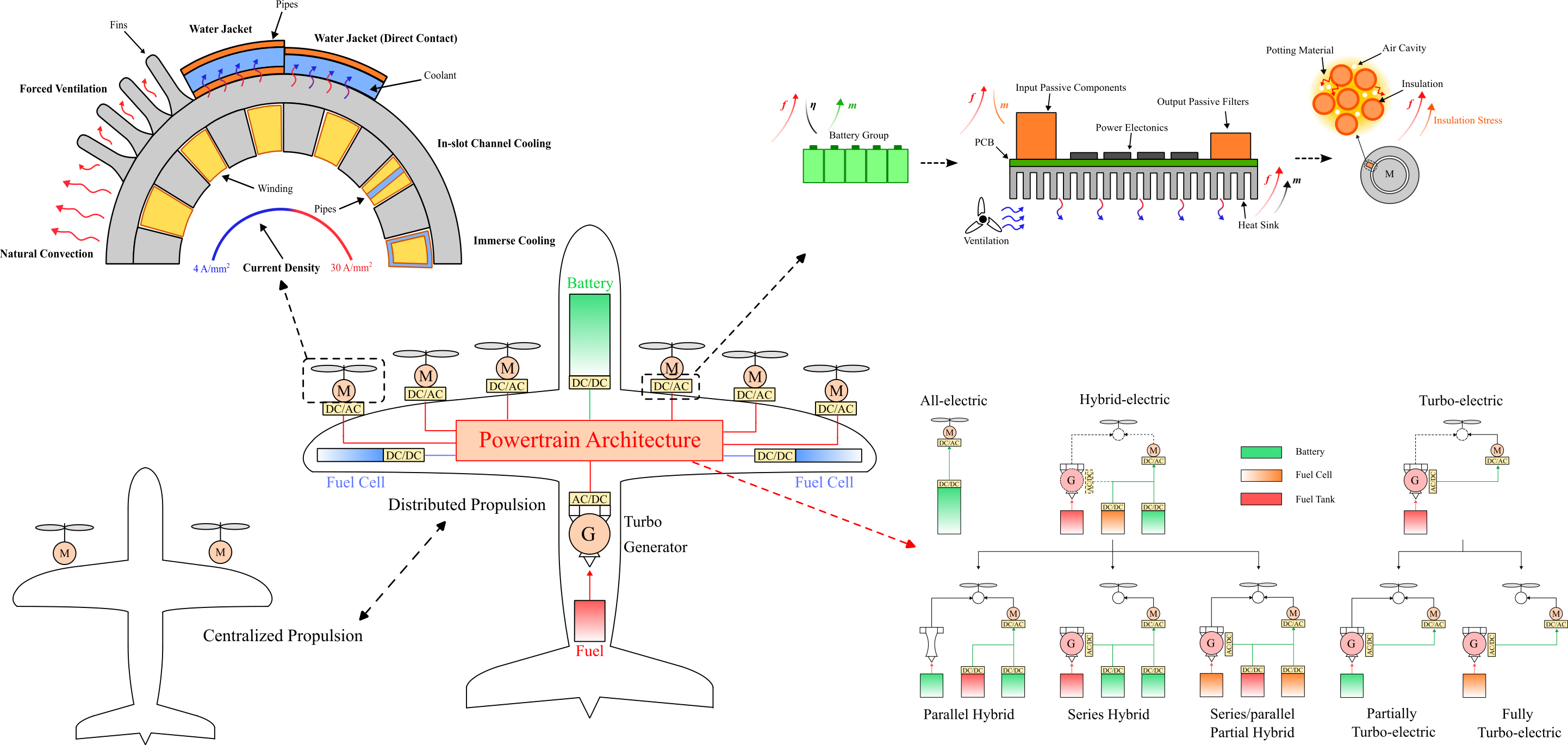Electric Propulsion for Hybrid Aircraft

Project description
The electrification of aircraft is currently the most promising alternative to address the rising demand for air transportation while mitigating economic and environmental concerns. NASA, for instance, has sponsored several aviation projects aimed at demonstrating the potential for reduced fuel consumption, emissions, and noise through electrified propulsion systems. Exemplary projects such as the X-57 all-electric aircraft (AEA) and the N3-X turbo-electric distributed propulsion (TeDP) concept illustrate ways to realize electrified aviation.
Nonetheless, the AEA design faces the barrier of defective energy storage technology. Whether utilizing batteries, fuel cells, or hydrogen, the aircraft design is limited to short-range commuting. Furthermore, ensuring the reliability and safety of energy storage devices in harsh environments demands substantial efforts and poses considerable challenges. While a full-scale transition to electric aircraft can be aggressive, replacing aviation components step by step is a feasible way to achieve our ambitious emission reduction target.
Over the last few decades, there has been a sustained effort to transition toward more electric aircraft (MEA). The conventional aircraft system, characterized by multiple power conversion steps, is inherently intricate, leading to reduced system efficiency and reliability. In contrast, electrical systems are superior in terms of size and efficiency compared to their hydraulic, pneumatic, and mechanical counterparts. The MEA concept, therefore, initiates to gradually replace various components of the conventional aircraft including the propulsion system.
The shift towards electric propulsion (EP) system for regional aircraft, however, presents notable challenges. According to NASA's roadmap, the power density of electric machines needs to exceed 30kW/kg to support a feasible design of EP system. However, the state of art motor struggles to reach a power density of only 8kW/kg. Despite this gap, several promising EP architectures including hybrid-electric and turbo-electric propulsion are under exploration. Nevertheless, in light of the insufficient study of EP system, it's imperative to conduct a comprehensive study including EP powertrain architecture, system efficiency and reliability.
Research Question
- How to achieve the optimal design of electric aircraft powertrain considering all essential components from energy source to propulsion terminals?
- How to assess the overall performance, such as efficiency and reliability, of various EP architecture?
- What’s the impact of current source inverter on motor insulation design? Compared to voltage source inverter, to what extent will the thickness of insulation be reduced? And what the influence of the reduced insulation will bring on the overall system performance?
- How to achieve a partial discharge free design of integrated motor drive?
PhD Candidate :
Jundong Wang : J.Wang-16@tudelft.nl
Supervisor:
Dr. Jianning Dong : J.Dong-4@tudelft.nl
Dr. ir. Mohamad Ghaffarian Niasar : M.GhaffarianNiasar@tudelft.nl
Promoter:
Prof. dr. ir. Pavol Bauer : P.Bauer@tudelft.nl